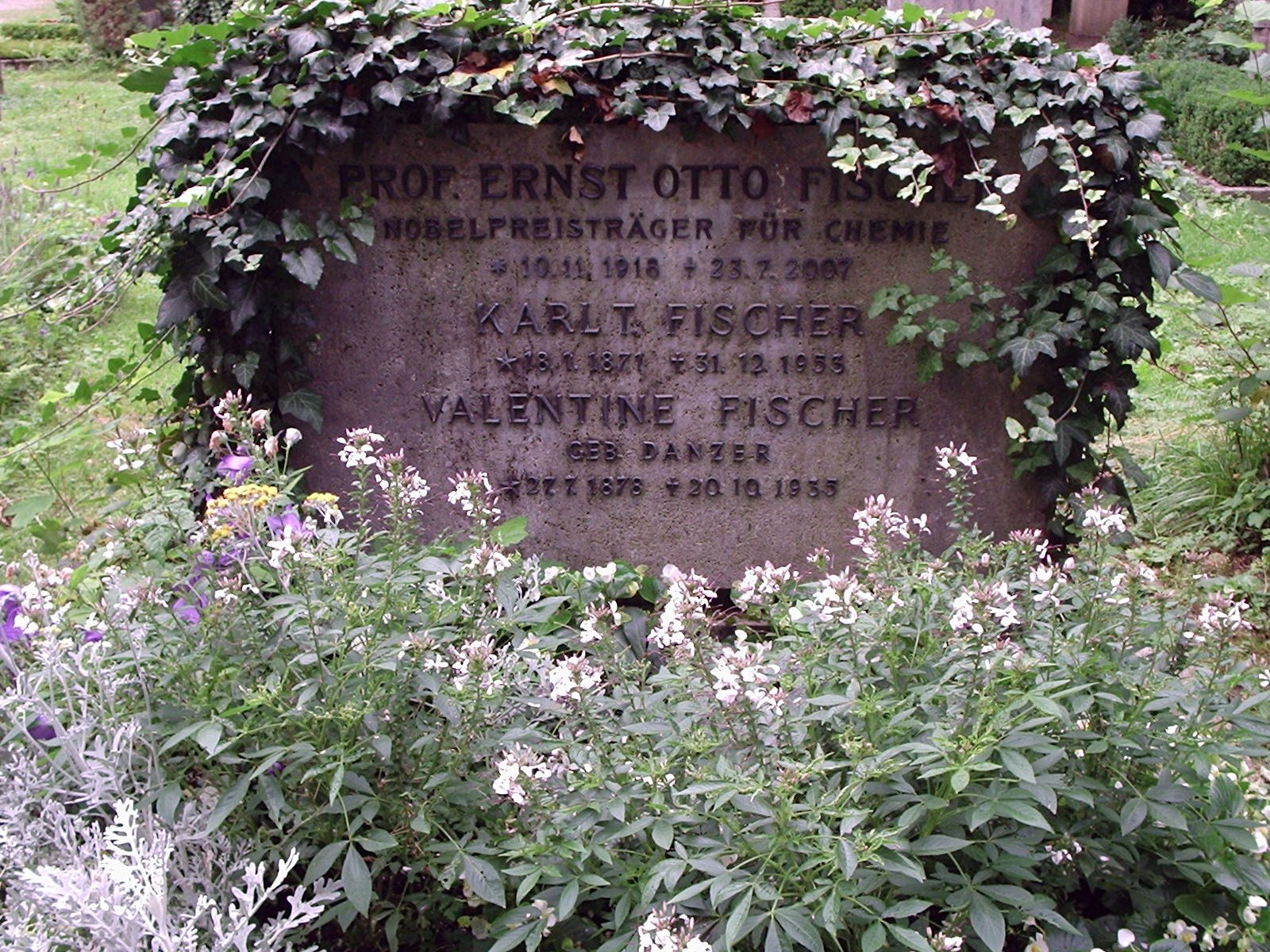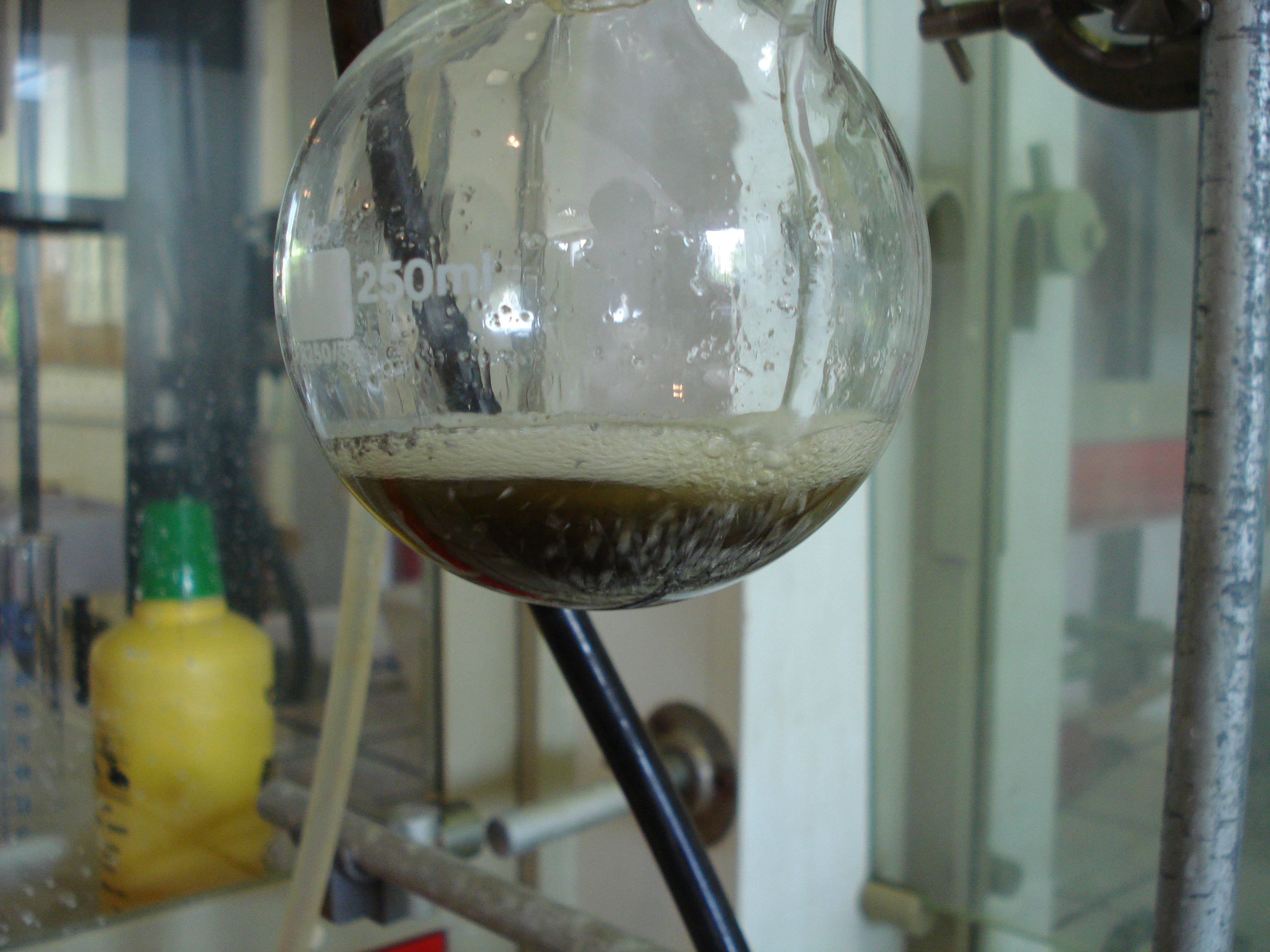|
Dibenzenechromium
Bis(benzene)chromium is the organometallic compound with the formula Cr( η6-C6H6)2. It is sometimes called dibenzenechromium. The compound played an important role in the development of sandwich compounds in organometallic chemistry and is the prototypical complex containing two arene ligands. Preparation The substance is air sensitive and its synthesis requires air-free techniques. It was first prepared by Hafner and Fischer by the reaction of CrCl3, aluminium, and benzene, in the presence of AlCl3. This so-called reductive Friedel-Crafts method was pioneered by E.O. Fischer and his students. The product of the reaction was yellow r(C6H6)2sup>+, which was then reduced to the neutral complex. Idealized equations for the synthesis are: : CrCl3 + 2/3Al + 1/3AlCl3 + 2C6H6 → r(C6H6)2lCl4 : r(C6H6)2lCl4 + 1/2Na2S2O4 → r(C6H6)2 + NaAlCl4 + SO2 Using the technique of metal vapor synthesis, bis(benzene)chromium and many analogous compounds can be prepared by ... [...More Info...] [...Related Items...] OR: [Wikipedia] [Google] [Baidu] |
Benzene
Benzene is an organic chemical compound with the molecular formula C6H6. The benzene molecule is composed of six carbon atoms joined in a planar ring with one hydrogen atom attached to each. Because it contains only carbon and hydrogen atoms, benzene is classed as a hydrocarbon. Benzene is a natural constituent of petroleum and is one of the elementary petrochemicals. Due to the cyclic continuous pi bonds between the carbon atoms, benzene is classed as an aromatic hydrocarbon. Benzene is a colorless and highly flammable liquid with a sweet smell, and is partially responsible for the aroma of gasoline. It is used primarily as a precursor to the manufacture of chemicals with more complex structure, such as ethylbenzene and cumene, of which billions of kilograms are produced annually. Although benzene is a major industrial chemical, it finds limited use in consumer items because of its toxicity. History Discovery The word "''benzene''" derives from "''gum benzoin''" (benzoin res ... [...More Info...] [...Related Items...] OR: [Wikipedia] [Google] [Baidu] |
Ernst Otto Fischer
Ernst Otto Fischer (; 10 November 1918 – 23 July 2007) was a German chemist who won the Nobel Prize for pioneering work in the area of organometallic chemistry. Early life He was born in Solln, a borough of Munich. His parents were Karl T. Fischer, Professor of Physics at the Technical University of Munich (TU), and Valentine née Danzer. He graduated in 1937 with ''Abitur''. Before the completion of two years' compulsory military service, the Second World War broke out, and he served in Poland, France, and Russia. During a period of study leave, towards the end of 1941 he began to study chemistry at the Technical University of Munich. Following the end of the War, he was released by the Americans in the autumn of 1945 and resumed his studies. Training Fischer graduated from TUM in 1949. He then started his doctoral thesis as an assistant to Professor Walter Hieber in the Inorganic Chemistry Institute, His thesis was entitled "The Mechanisms of Carbon Monoxide Reactions of ... [...More Info...] [...Related Items...] OR: [Wikipedia] [Google] [Baidu] |
Organic Synthesis
Organic synthesis is a special branch of chemical synthesis and is concerned with the intentional construction of organic compounds. Organic molecules are often more complex than inorganic compounds, and their synthesis has developed into one of the most important branches of organic chemistry. There are several main areas of research within the general area of organic synthesis: ''total synthesis'', ''semisynthesis'', and ''methodology''. Total synthesis A total synthesis is the complete chemical synthesis of complex organic molecules from simple, commercially available petrochemical or natural precursors. Total synthesis may be accomplished either via a linear or convergent approach. In a ''linear'' synthesis—often adequate for simple structures—several steps are performed one after another until the molecule is complete; the chemical compounds made in each step are called synthetic intermediates. Most often, each step in a synthesis refers to a separate rea ... [...More Info...] [...Related Items...] OR: [Wikipedia] [Google] [Baidu] |
(Benzene)chromium Tricarbonyl
(Benzene)chromium tricarbonyl is an organometallic compound with the formula . This yellow crystalline solid compound is soluble in common nonpolar organic solvents. The molecule adopts a geometry known as “ piano stool” because of the planar arrangement of the aryl group and the presence of three CO ligands as "legs" on the chromium-bond axis. Preparation (Benzene)tricarbonylchromium was first reported in 1957 by Fischer and Öfele, who prepared the compound by the carbonylation of bis(benzene)chromium. They obtained mainly chromium carbonyl (Cr(CO)) and traces of Cr(CH)(CO). The synthesis was optimized through the reaction of Cr(CO) and Cr(CH). For commercial purposes, a reaction of Cr(CO) and benzene is used: :Cr(CO) + CH → Cr(CH)(CO) + 3 CO Applications Complexes of the type (Arene)Cr(CO)3 have been well investigated as reagents in organic synthesis.. The aromatic ring of (benzene)tricarbonylchromium is substantially more electrophilic than benzene itself, al ... [...More Info...] [...Related Items...] OR: [Wikipedia] [Google] [Baidu] |
Chromium(II) Acetate
Chromium(II) acetate hydrate, also known as chromous acetate, is the coordination compound with the formula Cr2(CH3CO2)4(H2O)2. This formula is commonly abbreviated Cr2(OAc)4(H2O)2. This red-coloured compound features a quadruple bond. The preparation of chromous acetate once was a standard test of the synthetic skills of students due to its sensitivity to air and the dramatic colour changes that accompany its oxidation. It exists as the dihydrate and the anhydrous forms. Cr2(OAc)4(H2O)2 is a reddish diamagnetic powder, although diamond-shaped tabular crystals can be grown. Consistent with the fact that it is nonionic, Cr2(OAc)4(H2O)2 exhibits poor solubility in water and methanol. Structure The Cr2(OAc)4(H2O)2 molecule contains two atoms of chromium, two ligated molecules of water, and four acetate bridging ligands. The coordination environment around each chromium atom consists of four oxygen atoms (one from each acetate ligand) in a square, one water molecule (in an axial p ... [...More Info...] [...Related Items...] OR: [Wikipedia] [Google] [Baidu] |
Chemische Berichte
''Chemische Berichte'' (usually abbreviated as ''Ber.'' or ''Chem. Ber.'') was a German-language scientific journal of all disciplines of chemistry founded in 1868. It was one of the oldest scientific journals in chemistry, until it merged with ''Recueil des Travaux Chimiques des Pays-Bas'' to form ''Chemische Berichte/Recueil'' in 1997. ''Chemische Berichte/Recueil'' was then merged with other European journals in 1998 to form ''European Journal of Inorganic Chemistry''. History Founded in 1868 as ''Berichte der Deutschen Chemischen Gesellschaft'' (, CODEN BDCGAS), it operated under this title until 1928 (Vol. 61). The journal was then split into: * ''Berichte der Deutschen Chemischen Gesellschaft, A: Vereins-Nachrichten'' (, CODEN BDCAAS), and * ''Berichte der Deutschen Chemischen Gesellschaft, B: Abhandlungen'' (, CODEN BDCBAD). Vol. 78 and 79 (1945–1946) were omitted and not published due to World War II. The journal was renamed ''Chemische Berichte'' (, CODEN CHBEAM) in 19 ... [...More Info...] [...Related Items...] OR: [Wikipedia] [Google] [Baidu] |
Terphenyl
Terphenyls are a group of closely related aromatic hydrocarbons. Also known as diphenylbenzenes or triphenyls, they consist of a central benzene ring substituted with two phenyl groups. There are three substitution patterns: ''ortho''-terphenyl, ''meta''-terphenyl, and ''para''-terphenyl. Commercial grade terphenyl is generally a mixture of the three isomers. This mixture is used in the production of polychlorinated terphenyls, which were formerly used as heat storage and transfer agents.2C4H2S. It is an oligomer of the heterocycle thiophene, a shorter oligomer is dithienyl, and the parent polymer is polythiophene. In the most common isomer of terthiophene, two thien ... References {{reflist External links p-Terphenylat the Oregon Laser Medical Center at Centers f ... [...More Info...] [...Related Items...] OR: [Wikipedia] [Google] [Baidu] |
Biphenyl
Biphenyl (also known as diphenyl, phenylbenzene, 1,1′-biphenyl, lemonene or BP) is an organic compound that forms colorless crystals. Particularly in older literature, compounds containing the functional group consisting of biphenyl less one hydrogen (the site at which it is attached) may use the prefixes xenyl or diphenylyl. It has a distinctively pleasant smell. Biphenyl is an aromatic hydrocarbon with a molecular formula (C6H5)2. It is notable as a starting material for the production of polychlorinated biphenyls (PCBs), which were once widely used as dielectric fluids and heat transfer agents. Biphenyl is also an intermediate for the production of a host of other organic compounds such as emulsifiers, optical brighteners, crop protection products, and plastics. Biphenyl is insoluble in water, but soluble in typical organic solvents. The biphenyl molecule consists of two connected phenyl rings. Properties and occurrence Biphenyl occurs naturally in coal tar, crude oil, a ... [...More Info...] [...Related Items...] OR: [Wikipedia] [Google] [Baidu] |
Sandwich Complex
In organometallic chemistry, a sandwich compound is a chemical compound featuring a metal bound by haptic, covalent bonds to two arene (ring) ligands. The arenes have the formula , substituted derivatives (for example ) and heterocyclic derivatives (for example ). Because the metal is usually situated between the two rings, it is said to be "sandwiched". A special class of sandwich complexes are the metallocenes. The term ''sandwich compound'' was introduced in organometallic nomenclature in 1956 in a report by J. D. Dunitz, L. E. Orgel and R. A. Rich, who confirmed the structure of ferrocene by X-ray crystallography. The correct structure, in which the molecule features an iron atom ''sandwiched'' between two parallel cyclopentadienyl rings, had been proposed several years previously by Robert Burns Woodward and, separately, by Ernst Otto Fischer. The structure helped explain puzzles about ferrocene's conformers. This result further demonstrated the power of X- ... [...More Info...] [...Related Items...] OR: [Wikipedia] [Google] [Baidu] |
Organometallics
''Organometallics'' is a biweekly journal published by the American Chemical Society. Its area of focus is organometallic and organometalloid chemistry. This peer-reviewed journal has an impact factor of 3.837 as reported by the 2021 Journal Citation Reports by Thomson Reuters. Since 2015 Paul Chirik is the editor-in-chief of ''Organometallics''. He is an American chemist and the Edwards S. Sanford Professor of Chemistry at Princeton University, and associate director for external partnerships of the Andlinger Center for Energy and the Environment. He writes about the catalysis of hydrocarbons. Past editors-in-chief are Dietmar Seyferth and John Gladysz. Retrieved on 2014-07-30. This journal is indexed in |
Phenylmagnesium Bromide
Phenylmagnesium bromide, with the simplified formula , is a magnesium-containing organometallic compound. It is commercially available as a solution in diethyl ether or tetrahydrofuran (THF). Phenylmagnesium bromide is a Grignard reagent. It is often used as a synthetic equivalent for the phenyl "Ph−" synthon. Preparation Phenylmagnesium bromide is commercially available as solutions of diethyl ether or THF. Laboratory preparation involves treating bromobenzene with magnesium metal, usually in the form of turnings. A small amount of iodine may be used to activate the magnesium to initiate the reaction. Coordinating solvents such as ether or THF, are required to solvate (complex) the magnesium(II) center. The solvent must be aprotic since alcohols and water contain an acidic proton and thus react with phenylmagnesium bromide to give benzene. Carbonyl-containing solvents, such as acetone and ethyl acetate, are also incompatible with the reagent. Structure Although phenylmagn ... [...More Info...] [...Related Items...] OR: [Wikipedia] [Google] [Baidu] |
Franz Hein
Franz Hein (30 June 1892 – 26 February 1976) was a German scientist and artist. History Franz Hein was born in Grötzingen (Baden), Germany. His high school years were spent in Leipzig, as well as, his college years at the University of Leipzig. Hein completed his Ph.D. in 1917 on optical studies of bismuth and triphenylmethane derivatives. Hein made ''Assistant'' at the University and in 1920 ''Oberassistent''. He continued working on his ''Habilitation'' becoming a professor in 1923. With the completion of his ''Habilitation'', Hein went to work on organometallic system electrochemistry. In 1933, Hein signed the ''Vow of allegiance of the Professors of the German Universities and High-Schools to Adolf Hitler and the National Socialistic State''. From 1941 to 1965, Hein worked on main-group-metal derivatives of metal carbonyls. After 1942, he moved from Leipzig to the Friedrich Schiller University of Jena where he became the Director of the Institute for Inorganic Chemistry ... [...More Info...] [...Related Items...] OR: [Wikipedia] [Google] [Baidu] |
2.png)

chromiumtricarbonyl_lithiation_TMS.png)
_acetate.jpg)

